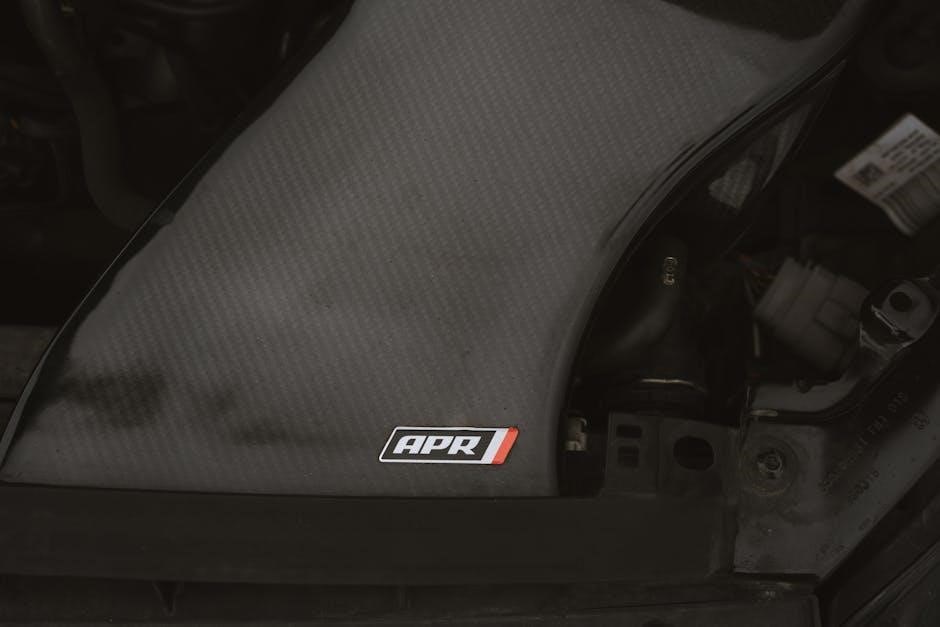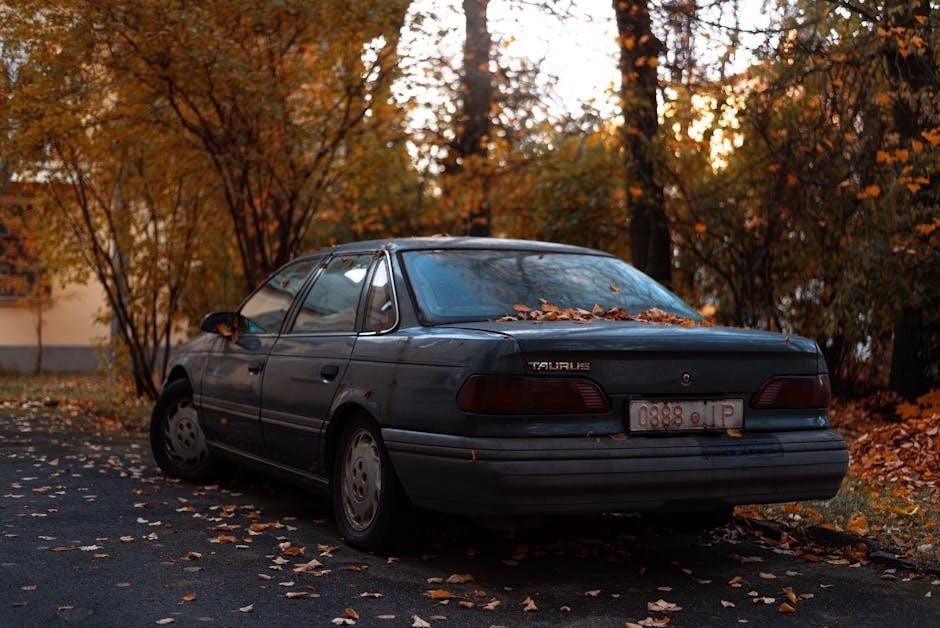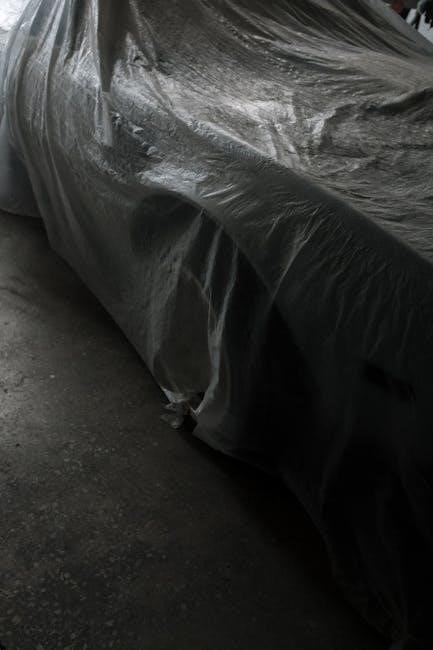car cover size guide
Choosing the right car cover size ensures optimal protection and a snug fit. This guide helps you measure your vehicle accurately and select the perfect cover for its dimensions and style.

Importance of Choosing the Right Size
Choosing the right car cover size is crucial for ensuring optimal protection and a proper fit. A cover that is too small may leave parts of your vehicle exposed, while one that is too large can be cumbersome and prone to wind damage.
A poorly fitting cover can lead to issues like moisture trapping, paint damage, and even tears in the material. A snug, exact fit ensures that the cover stays securely in place and provides the best possible defense against UV rays, dust, rain, and other environmental factors.
Additionally, the right size guarantees ease of installation and removal, saving you time and effort. Investing in a cover tailored to your vehicle’s dimensions ensures long-term durability and maximum protection.
Always compare your car’s measurements with manufacturer sizing charts to avoid costly mistakes. A well-fitting cover is not just an accessory—it’s an investment in your vehicle’s longevity and appearance.

How to Measure Your Vehicle
To ensure a proper fit, measure your vehicle’s length, width, and height accurately.
Include any external accessories or modifications to get precise measurements.
Accurate measurements ensure the best fit and optimal protection for your car.
Measuring Length
Measuring the length of your vehicle is the first step in finding the right car cover size; Start by measuring from the front bumper to the rear bumper, ensuring the tape measure is straight and level.
Include any external accessories, such as spoilers or bike racks, as these will affect the fit of the cover.
For sedans and coupes, the average length ranges from 13 to 16 feet, while SUVs and trucks may require larger sizes.
Record the measurement accurately, as even small discrepancies can lead to a poor fit.
If unsure, double-check the measurement to avoid errors.
This step ensures the cover drapes evenly and provides full protection.
Measuring Width
Measuring the width of your vehicle is crucial for ensuring the car cover fits properly. Start by measuring from the widest point on one side of the car to the widest point on the other side.
This typically includes the distance from the outer edge of the driver’s side mirror to the outer edge of the passenger’s side mirror.
If your vehicle has external accessories like side steps or large mirrors, include these in your measurement.
For most sedans, the width ranges from 5 to 6 feet, while larger vehicles like SUVs or trucks may require wider covers.
Record this measurement accurately, as it ensures the cover will drape evenly and provide full coverage.
If your vehicle has unique features that add to its width, such as fender flares, make sure to account for these.
Comparing your width measurement to the manufacturer’s sizing chart will help you select the most appropriate cover.
Measuring Height
Measuring the height of your vehicle is essential for ensuring the car cover fits properly and provides complete protection.
Start by identifying the tallest point of your car, typically the roof, and measure vertically from the ground to this point.
For most sedans, the height ranges from 4 to 5 feet, while SUVs or trucks may be taller, requiring larger covers.
If your vehicle has roof racks, antennas, or other accessories, include these in your measurement to ensure the cover accommodates them.
Record this measurement accurately to match it with the manufacturer’s sizing chart.
The height ensures the cover will stretch gracefully over the vehicle without being too tight or too loose.
Remember, an accurate height measurement is key to achieving a snug and secure fit for your car cover.

Accounting for Modifications
When measuring your vehicle for a car cover, it’s crucial to account for any modifications that could affect the fit.
Spoilers, roof racks, or aftermarket accessories may add extra height or width, requiring a larger cover.
If your car has been lifted or lowered, measure the new height to ensure the cover reaches the ground properly.
Custom bumpers or side mirrors can also impact the width measurement.
Even small additions, like a roof-mounted bike rack, should be included in your calculations.
Failing to consider these modifications can result in a cover that’s too tight or too loose.
Always double-check the manufacturer’s sizing chart to see if they provide guidance for modified vehicles.
If unsure, contact the manufacturer or consider a universal cover with adjustable features.
Accounting for modifications ensures a proper fit and maximum protection for your vehicle.
Understanding Manufacturer Sizing Charts
Manufacturer sizing charts provide specific dimensions for each vehicle model, ensuring a precise fit. They often include length, width, and height measurements to help you select the ideal cover for your car.
How to Read Size Charts
Reading size charts for car covers involves comparing your vehicle’s measurements to the chart’s dimensions. Charts typically list length, width, and height, often categorized by vehicle type or make and model. Start by identifying your car’s dimensions, then match them to the closest size. Pay attention to any model-specific notes, as some charts may list exact fits for popular vehicles. Features like elastic hems and adjustable straps are noted to accommodate slight variations. If unsure, consider reaching out to the manufacturer or using their sizing guides for precise fit. Always double-check your measurements against the chart to avoid sizing errors and ensure optimal protection for your vehicle.

Installation Tips for the Best Fit
Start by identifying the front of the cover and drape it evenly over your car. Secure the cover with straps or elastic hems, ensuring a snug and proper fit for full protection.
Where to Start Draping
Begin by identifying the front of the car cover, as most covers are designed with a label or specific markers for orientation. Start draping from the center of the vehicle’s front, ensuring the cover aligns evenly with the car’s body. Smoothly unfold the cover side to side, working your way toward the rear. This method helps prevent wrinkles and ensures a snug fit. For vehicles with antennas or roof racks, guide the cover over these areas carefully to avoid tears or misalignment. Once the cover is fully draped, check that it covers all exterior surfaces, including mirrors and door handles. Use the elastic hems or tie-down straps to secure the cover tightly around the vehicle’s edges for a proper fit. This step-by-step approach ensures your car is fully protected and the cover stays in place, even in windy conditions.
Securing the Cover
Securing the car cover properly ensures a snug, protective fit that withstands weather and wind. Start by attaching the elastic hems around the vehicle’s edges, making sure they grip tightly without stretching excessively. Use adjustable straps or tie-downs, typically located at the cover’s corners or mid-sections, to fasten the cover under the car or around the wheels. For added stability, tighten these straps evenly to avoid sagging or flapping. If your cover has grommets or hooks, secure them to the vehicle’s undercarriage or wheel wells for maximum hold. Ensure no loose fabric is left exposed, as it could cause damage or allow moisture to seep in. Regularly check and tighten the cover, especially before harsh weather conditions. Properly securing the cover not only enhances protection but also extends its durability, ensuring your vehicle remains safeguarded and pristine.

